Bergen is notorious for its constant rain; with an average of 239 rainy days per year, it’s actually one of Europe’s wettest places! Nevertheless, Norway’s second-largest city is known for its beauty, and it’s no wonder. The city is nestled below seven mountains that rise high above quaint streets and colourful houses. The unstable weather only adds to its charm.
I had been to the area once before as a small child but I could hardly remember anything, so when my best friend moved up there for a PhD position, I knew I had to grab the chance to explore Bergen! It was a rather spontaneous ten-day trip back in November last year, and while I did get some days of constant rain, I also got lucky and experienced beautiful sunny days – despite visiting in the middle of the off-season!


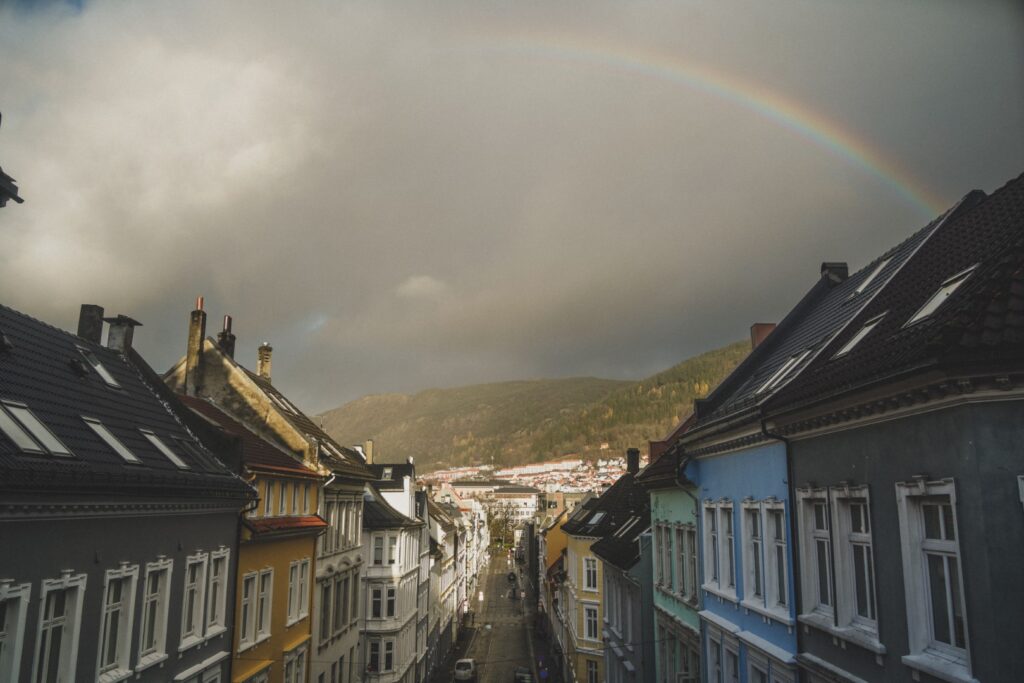
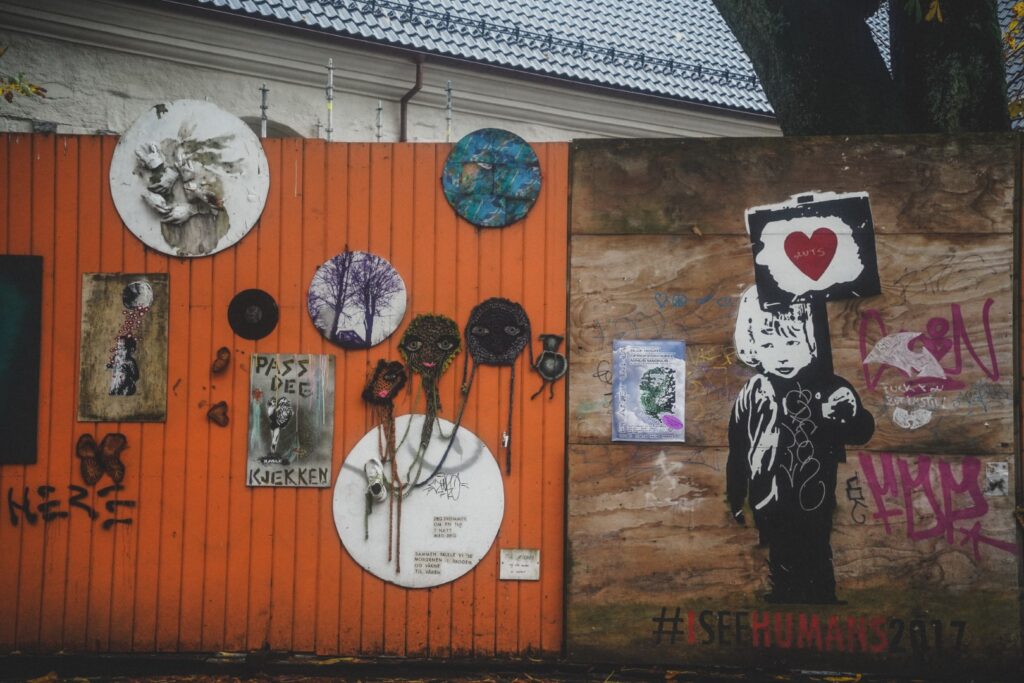
To get to Bergen, I chose to sail from Hirtshals in Denmark, a trip that took 16 hours (excluding the four-hour train ride from home to Hirtshals). I’d booked the cheapest option available, a so-called airseat which was quite uncomfortable to sleep in but I did manage to catch a few hours of shut-eye. I set my alarm for 8 AM when the sun rose, and woke up to some beautiful views of the southern Norwegian fjords as we approached Bergen. If you have time, I can highly recommend arriving to Bergen by ferry!
Over the next ten days, I explored Bergen on the few sunny days I got. I went for several runs around a mountain lake, and spent the rainy days working with my best friend in her office, hanging out with her friends and watching Norsemen (my new fave show!). It was a wonderful time, and I really enjoyed Bergen – even on the rainiest days!
Below are eight experiences in Bergen that are sure to make you fall in love with the city too – rain or not!
Take a stroll along Bryggen, a historic wharf
Bergen’s hands-down most famous sight is Bryggen, an old wharf with over sixty tall, narrow, brightly-coloured wooden townhouses that line the eastern side of Vågen harbour. Bryggen was established aound 1070 AD, and Bergen grew around it in the centuries to come.
Bryggen was of central significance to the Hanseatic League from the mid-14th century and through to the mid-18th century. It became the centre of commercial activities in Norway, and for many centuries, the city was a trading and seafaring port of major importance. Unfortunately, Bryggen burned down several times throughout its history but it was always rebuilt in the same style. The houses that can be seen today date back to 1702, and some stone cellars even date back to the 15th century! Bryggen was included on the UNESCO World Heritage List in 1979.
Enjoy a slow stroll along this iconic wharf, and don’t forget to visit some of its many cute shops, pubs and restaurants for a look inside the historic buildings. Pay a visit to Bryggen Museum if you’re interested in learning about the history of Bryggen and life in Bergen in Medieval times.
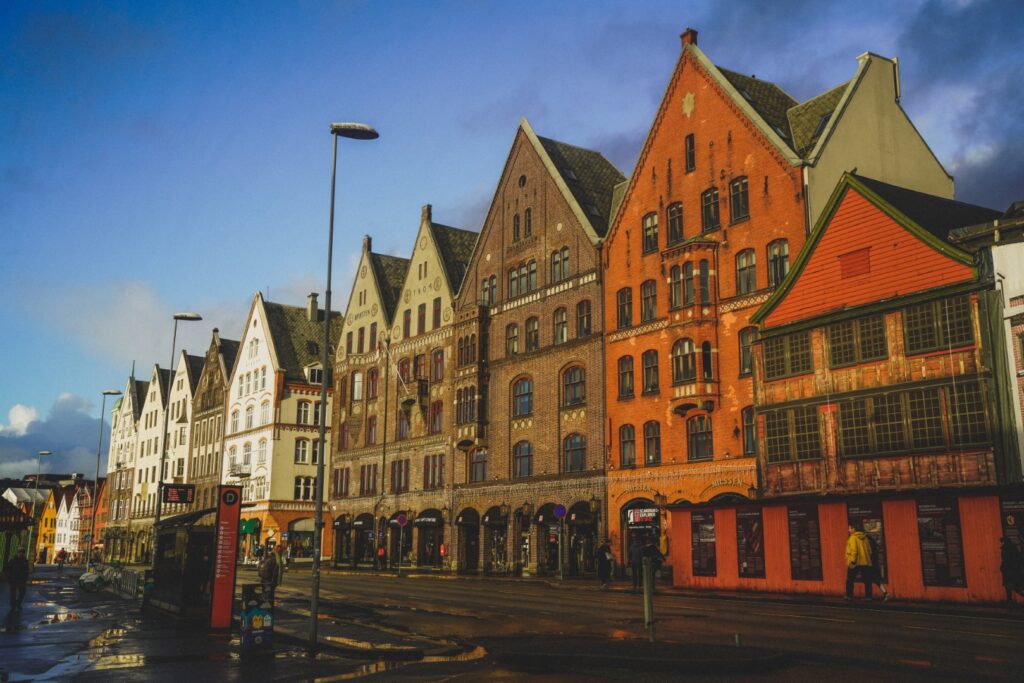
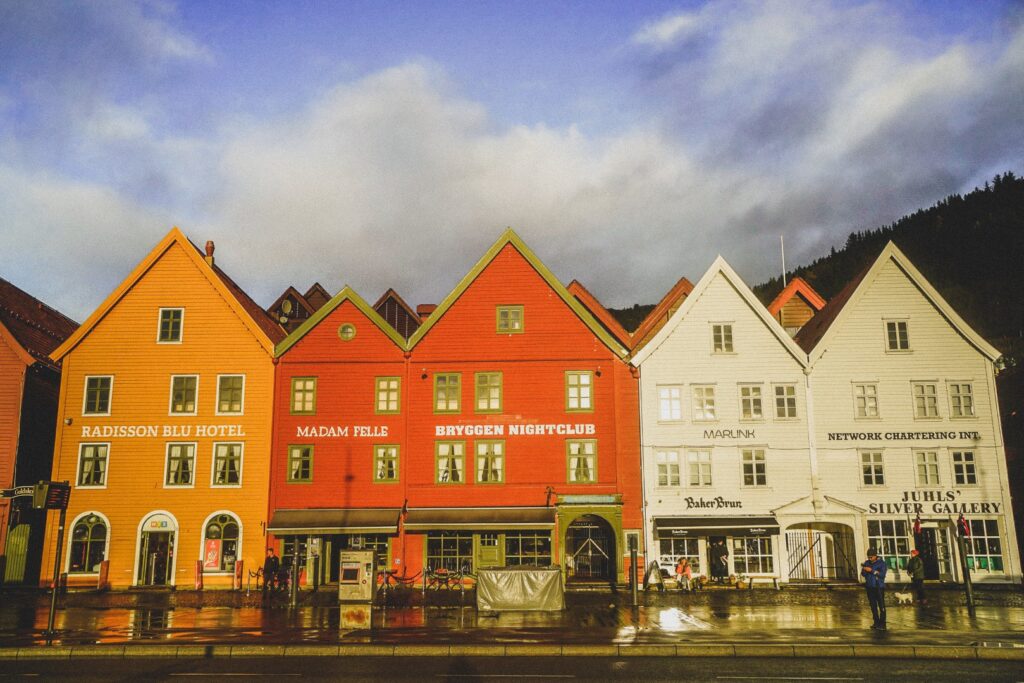
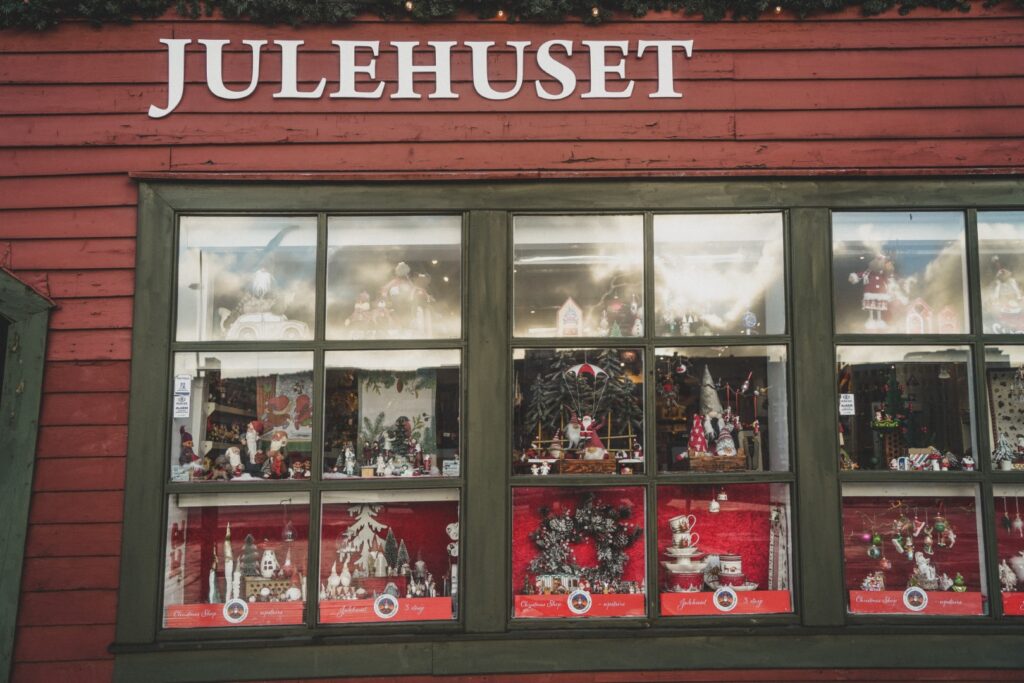
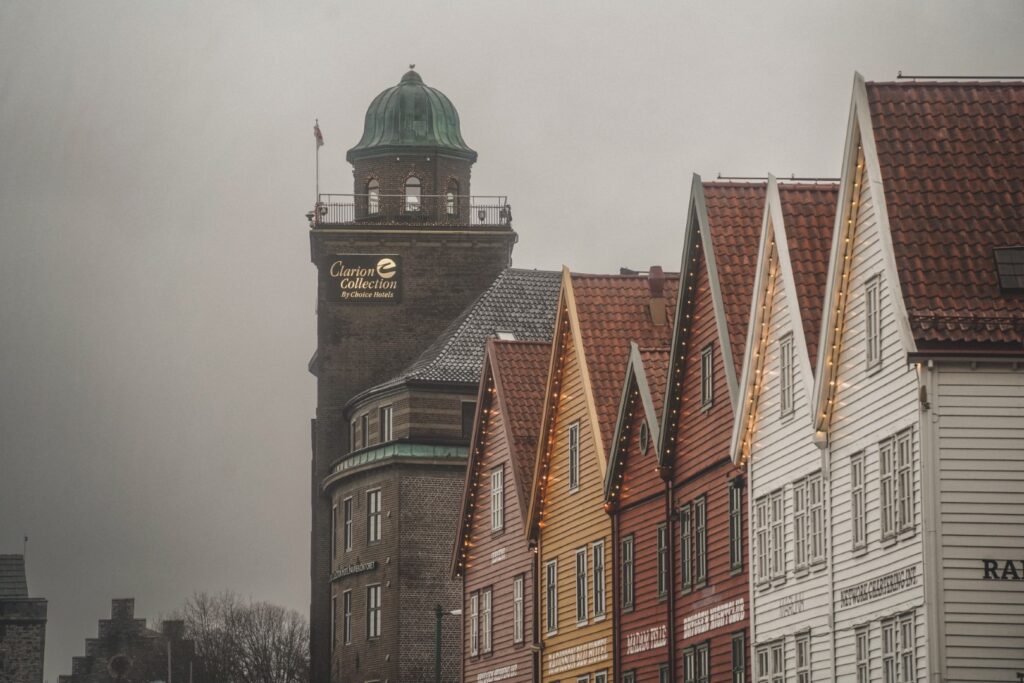
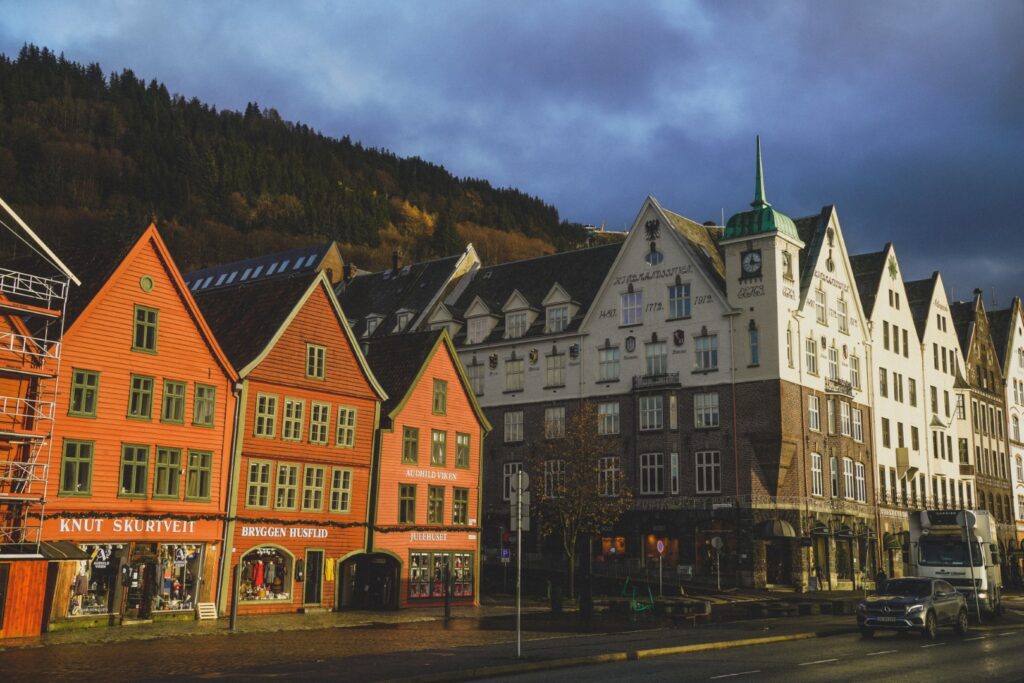

Explore the hidden alleyways of Bryggen
For most visitors, Bryggen is first and foremost a beautiful facade to photograph. But hidden behind the iconic facade is a whole network of narrow alleyways, brimming with craft shops and small cafés just waiting to be discovered.
I really enjoyed taking it slow and allowing myself time to explore Bryggen in depth, and I recommend you to do the same. It may be a small area, but I promise you it’s worth spending a few hours getting lost among the townhouses. And don’t forget to walk along the backside of Bryggen for some wonderful views of its characteristic roofs.
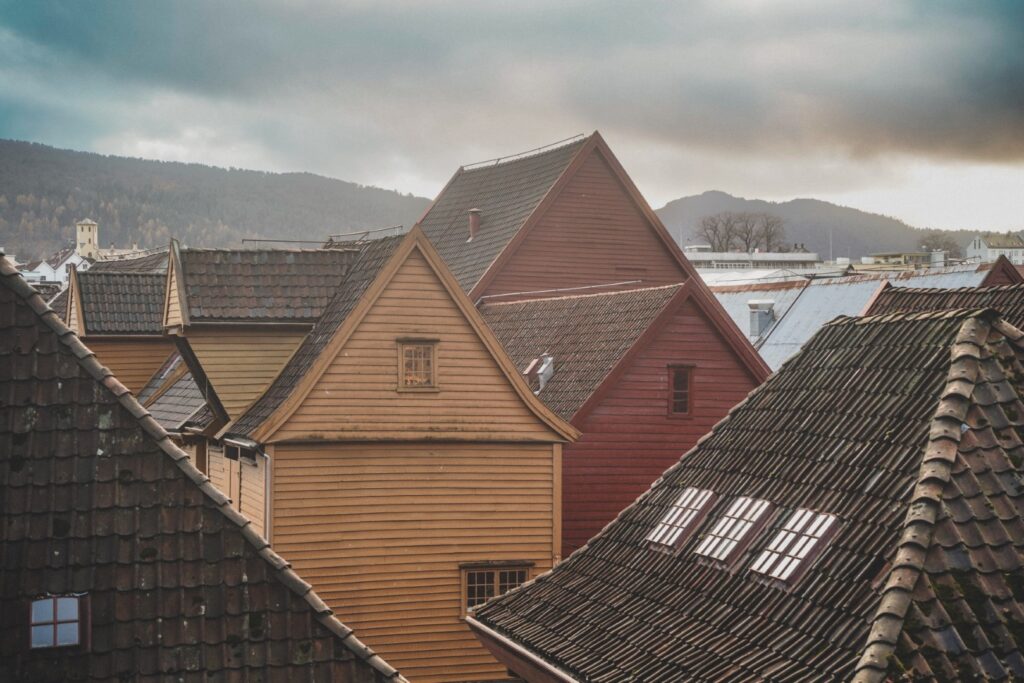

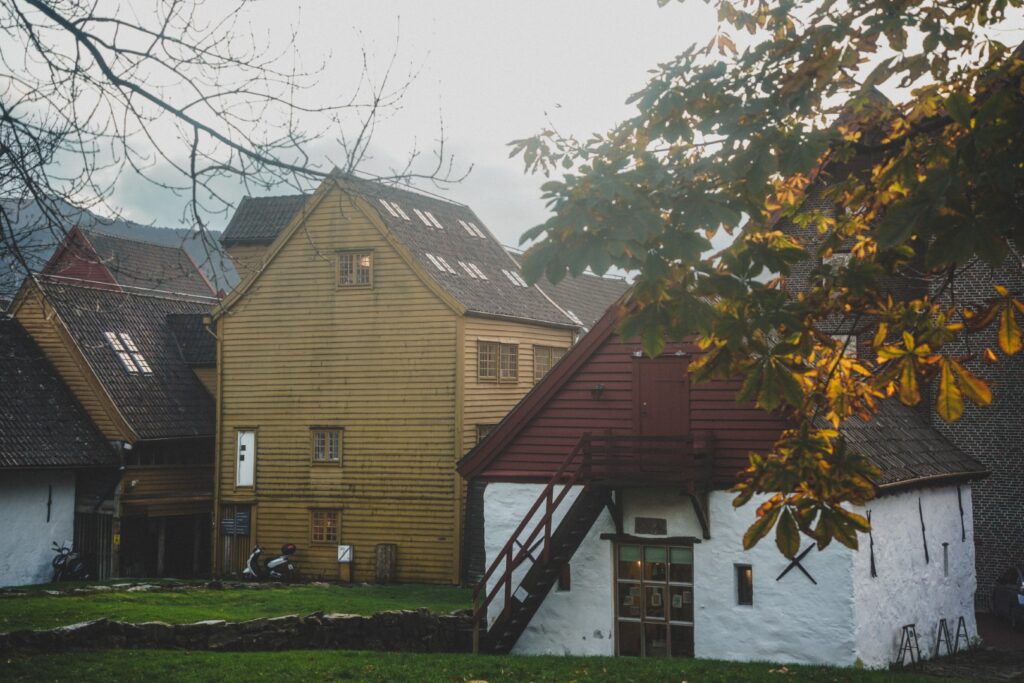
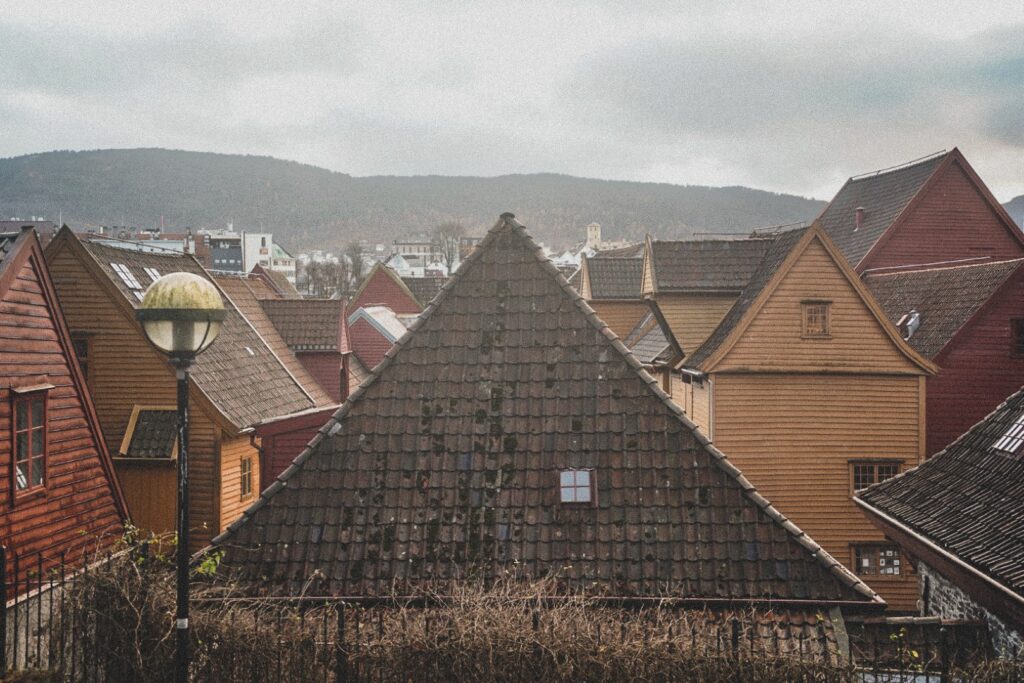

Visit St Mary’s Church, Bergen’s oldest building
Thought to be built between 1130 and 1170 due to its architectural style, St Mary’s Church is considered the oldest existing building in Bergen. Although two fires ravaged the church in the early Medieval times, the church is incredibly well-preserved.
St Mary’s Church is not Bergen’s main church but it was my personal favourite because of its elaborately decorated interior. The altarpiece depicting Virgin Mary and baby Jesus surrounded by saints and apostles is its main draw; it was imported from North Germany in the late 15th century and is considered the greatest treasure of the church. The pulpit is also of great importance as its stylistic features are unique for Norway, and it’s thought to have been brought to Bergen from the Netherlands by Hanseatic merchants in the late 17th century.
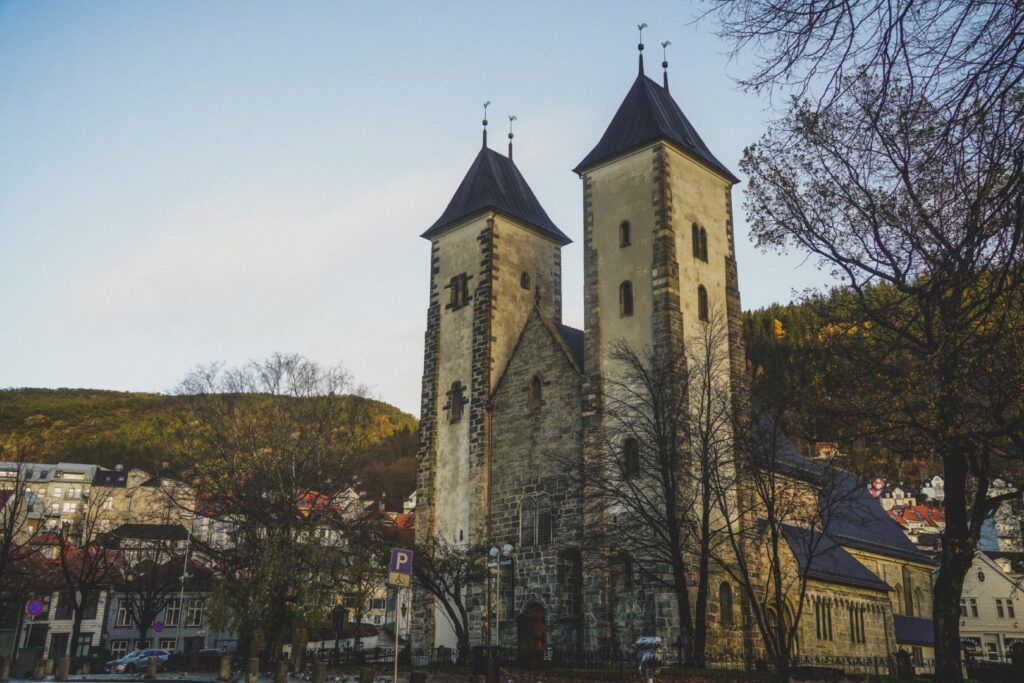


Learn about Bergen’s natural and cultural history
Bergen is renowned for its vast array of museums, and choosing one or two to visit can be quite a challenge. So I went with the recommendations of my best friend, and spent a day exploring the University Museum of Bergen, which has two large collections – one cultural and one natural.
The cultural history exhibition is the place to go if you’re interested in the archaeology, history and anthropology of the region, and the natural history exhibition is where you’ll learn about local geology, zoology and botany. If you’re spending more than a few days in Bergen, I truly recommend you to visit these two exhibitions to gain a better insight into the city and its natural surroundings. If you only have time for one, go to the natural history exhibition. The cultural history exhibition is very interesting, but the natural history exhibition is on a whole other level (and this is coming from an archaeologist!).
Admission fee is 60 NOK for adults and entrance is free for children. The museum is open year-round from 11 AM to 5 PM, except on Mondays.
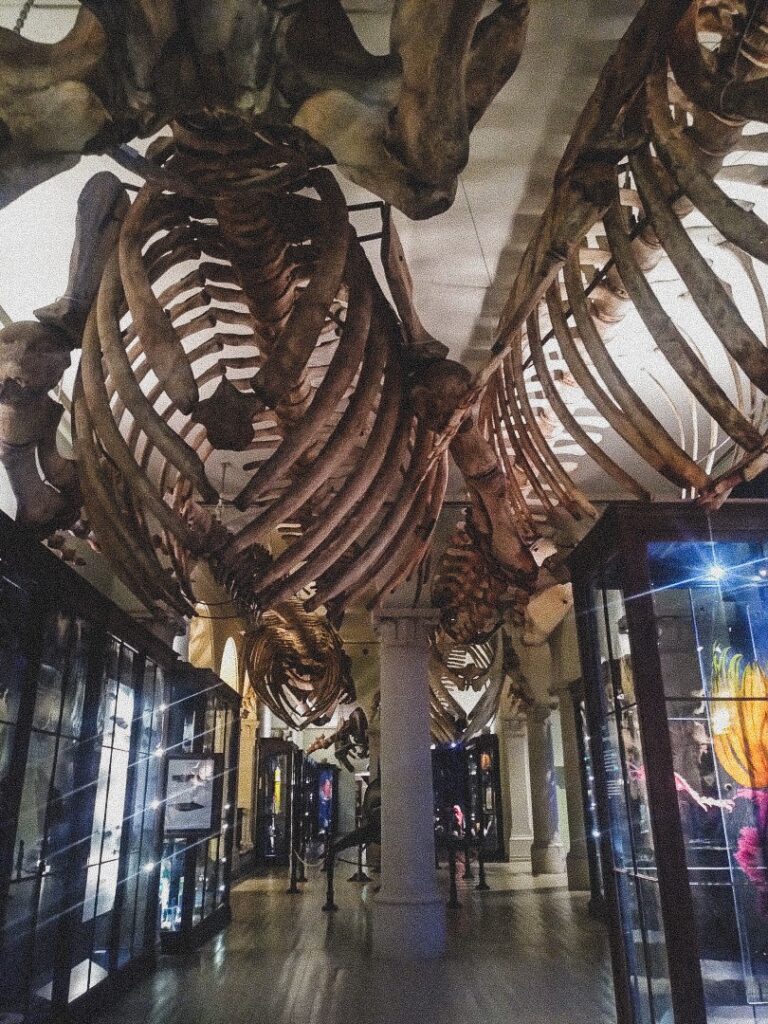
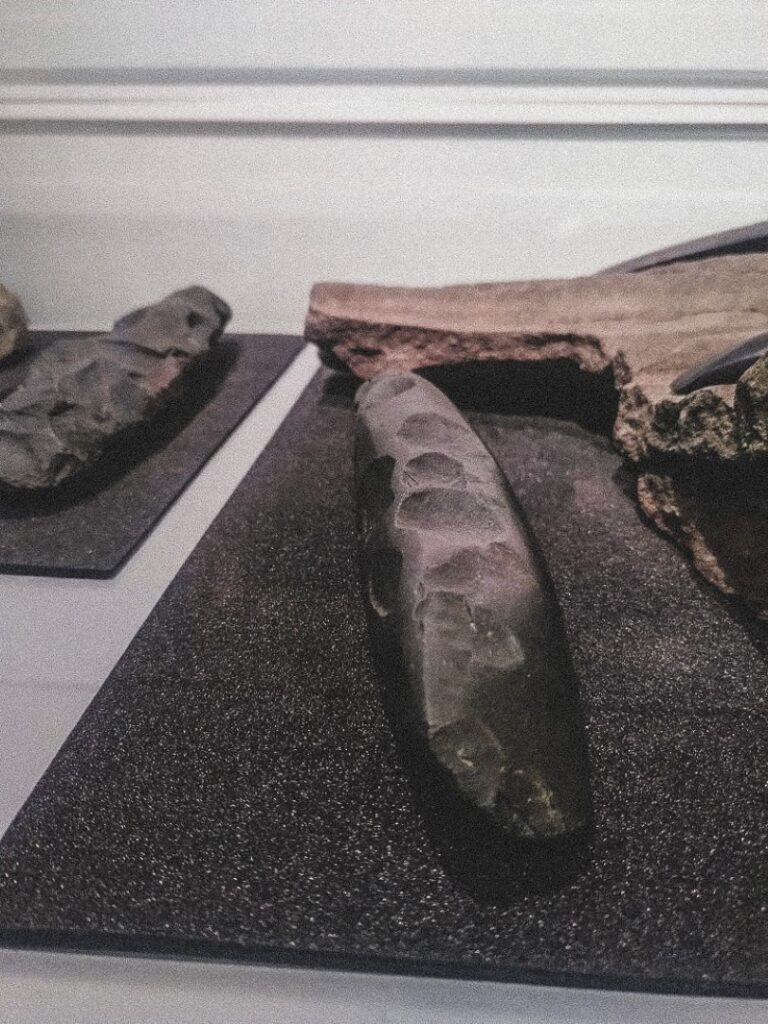
Explore Bergen Cathedral
Bergen Cathedral is the main church in the city. It was built upon the remains of a small stone church from around 1150. The church was dedicated to Saint Olaf, the patron saint of Norway, and the cathedral carries on this tradition. The cathedral standing today was built in the late 13th century and consecrated by bishop Narve in 1301.
The cathedral is enormous, with space for around 900 people. The interior is plain and modest, with bare rustic walls and dim stained glass windows. When I visited, dark biblical paintings by Norwegian artist Håkon Gullvåg were on display, adding to the rather creepy atmosphere of the old cathedral.
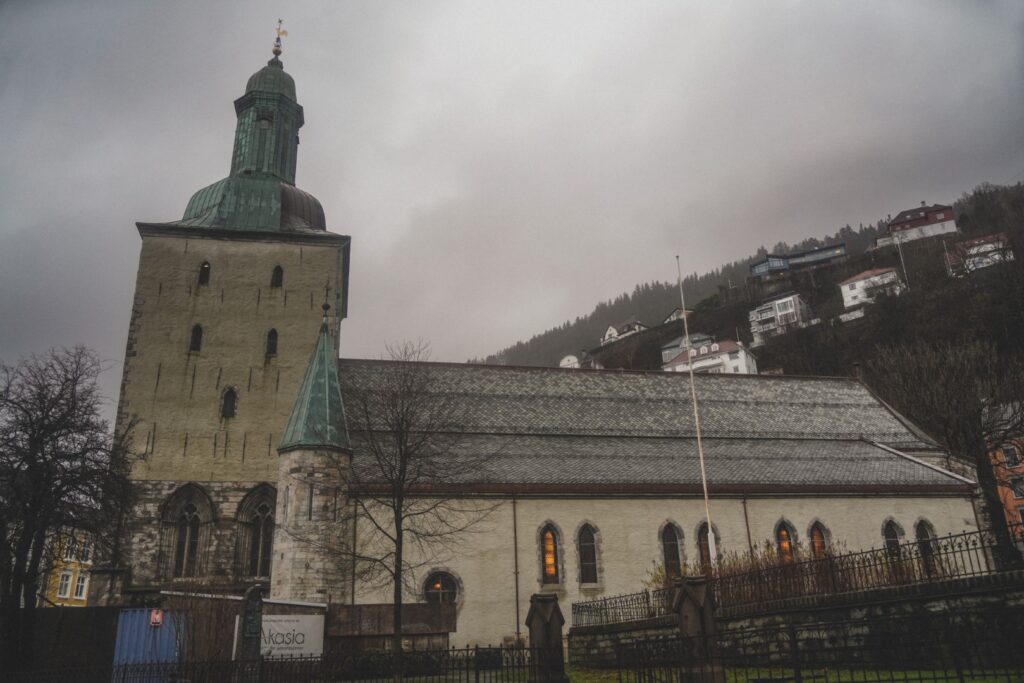
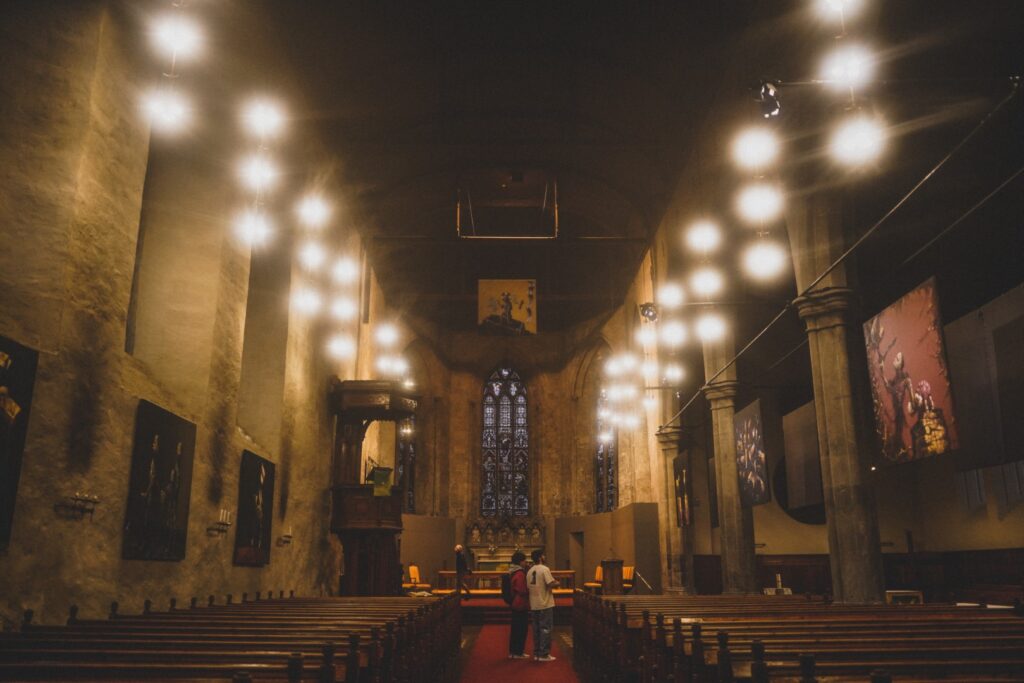
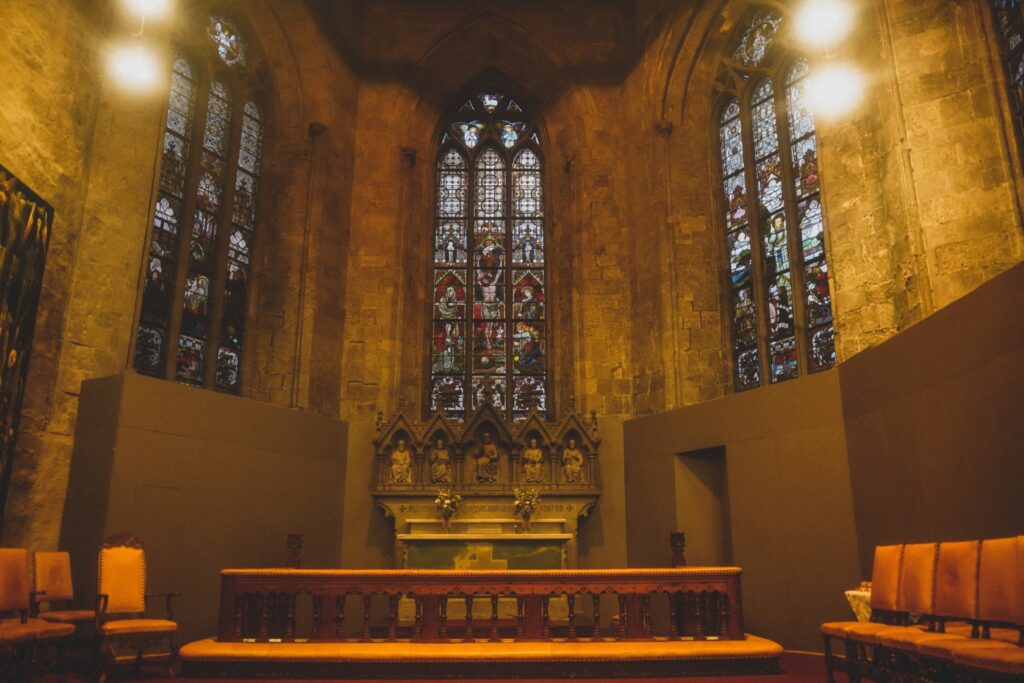
Discover Bergenhus Fortress
Go for a walk on the grounds of Bergenhus Fortress, a stone fort dating back to the 1260s, making it one of the oldest of its kind in Norway. The fortress walls hold the fortified Rosenkrantz Tower from the 16th century as well as Haakon’s Hall, a former royal residence from the 13th century. Unfortunately, the latter was severely damaged in a fire in 1944, so I decided the 120 DKK entrance fee wasn’t worth it.
Instead, I enjoyed a slow walk through the historic fortress grounds while the rain fell gently from above. I urge you to do the same!
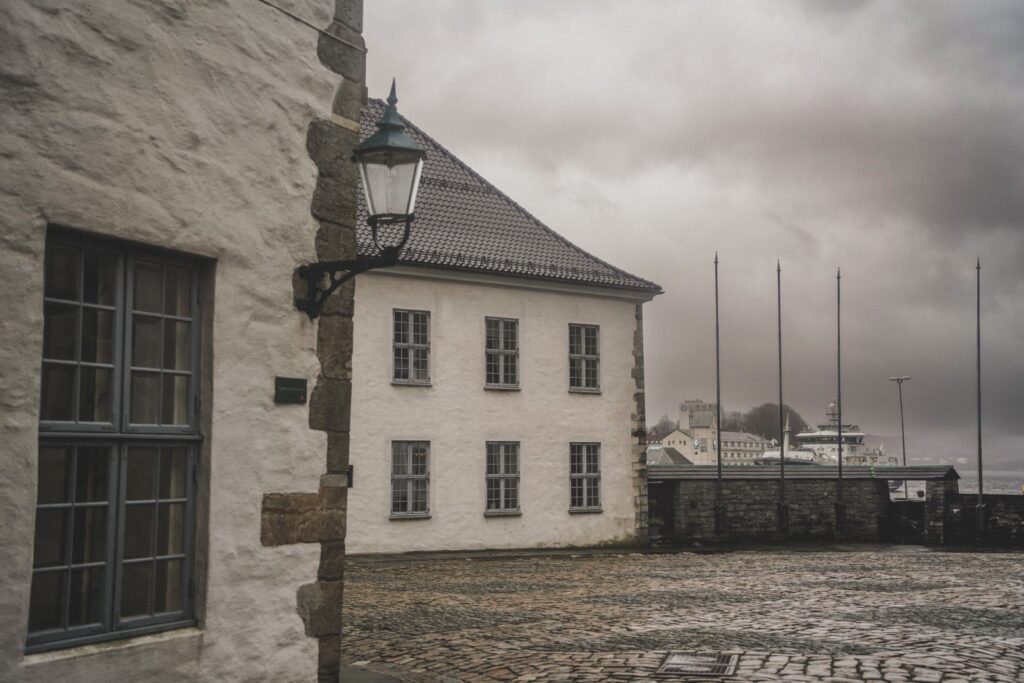
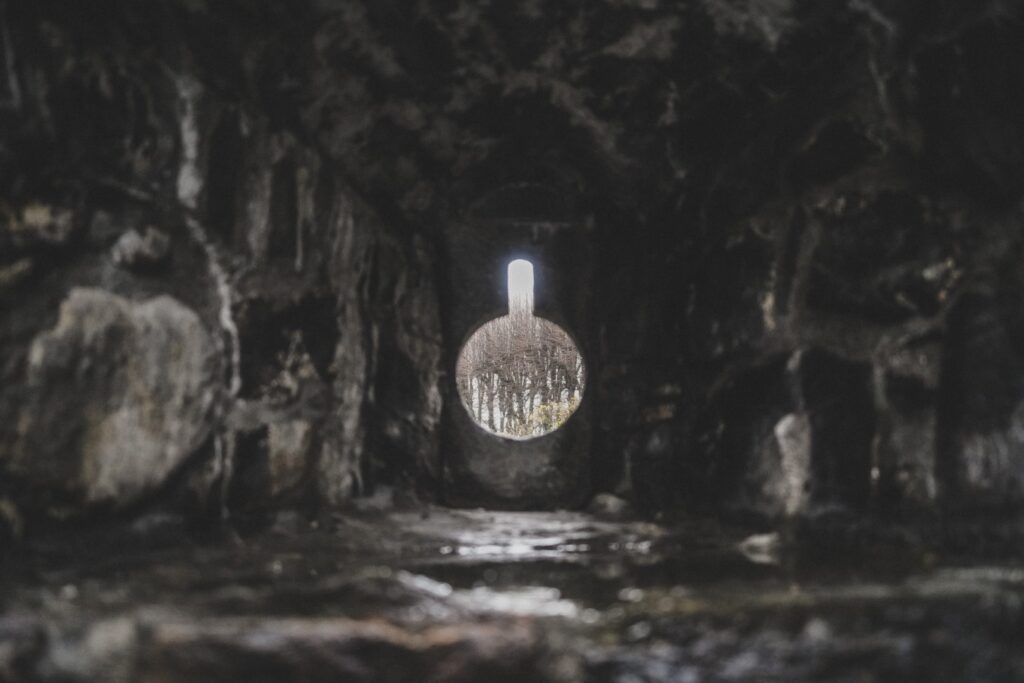

Take a stroll and enjoy the views along Fjellveien
For the best views of Bergen (aside from the mountain tops), enjoy a long stroll along Fjellveien. This scenic road is 4,6 km long and starts at Bellevue in Fløen and ends in Sandviken. Along the way, you’ll get the most beautiful views of downtown Bergen and Bryggen, and you’ll pass by some of the most luxurious villas in the city. My favourite view of the city centre was at Skansen, in front of the historic fire station.
I can recommend walking this road at sunset or sunrise on one of those rare sunny days – just look at these pictures below to see why!
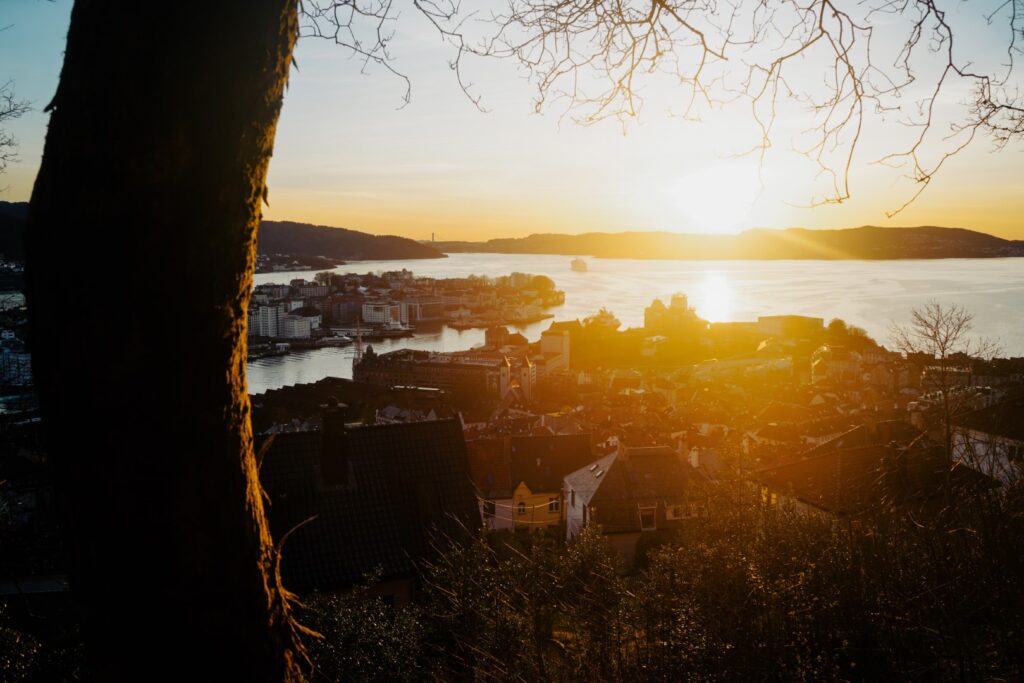


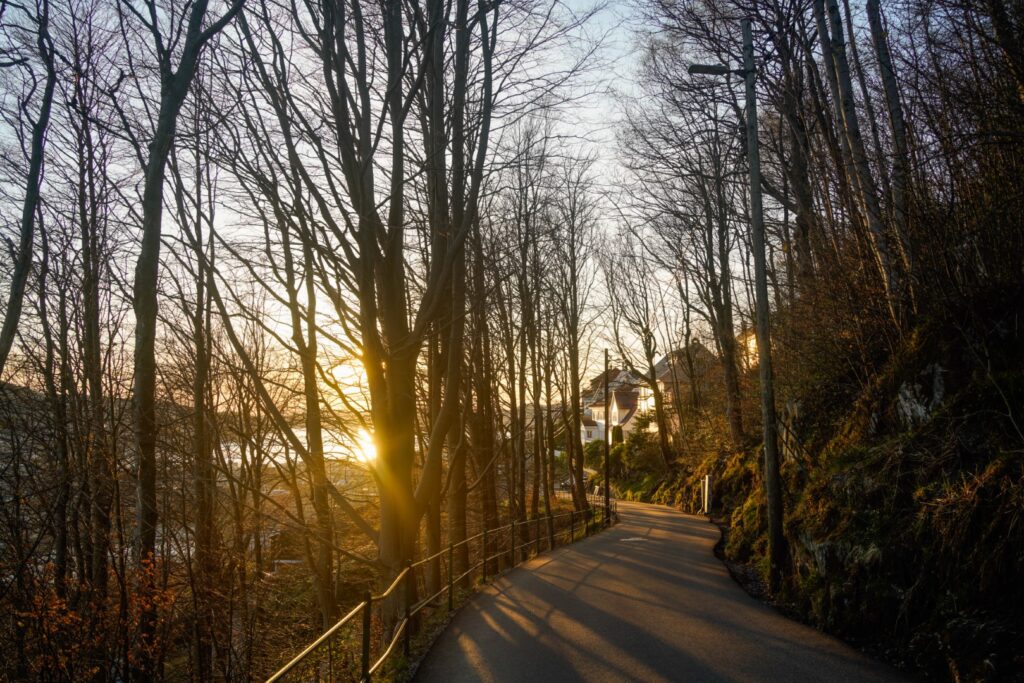
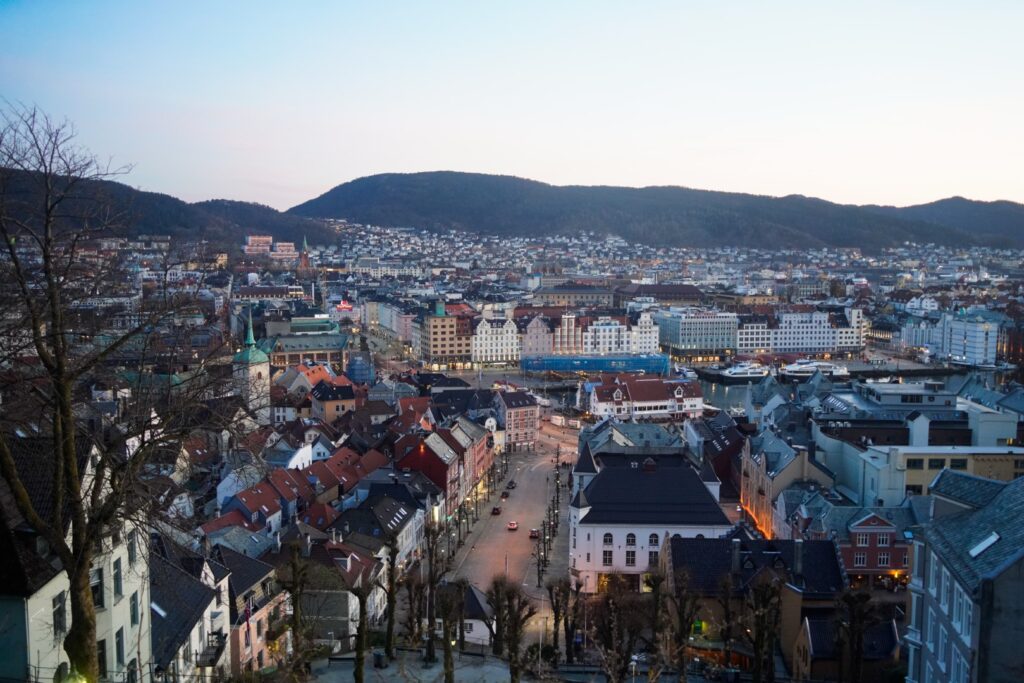
Explore Sandviken, Bergen’s prettiest neighbourhood
At the end of Fjellveien, you’ll reach Sandviken, my favourite neighbourhood in Bergen. Here, the houses are whitewashed and the streets narrow and cobbled. The area is also quite hilly with gorgeous views over the rest of the city.
If you’re looking for a quiet yet central place to stay while in Bergen, Sandviken is the perfect choice. And even if you don’t stay there, I recommend taking time to explore the area!
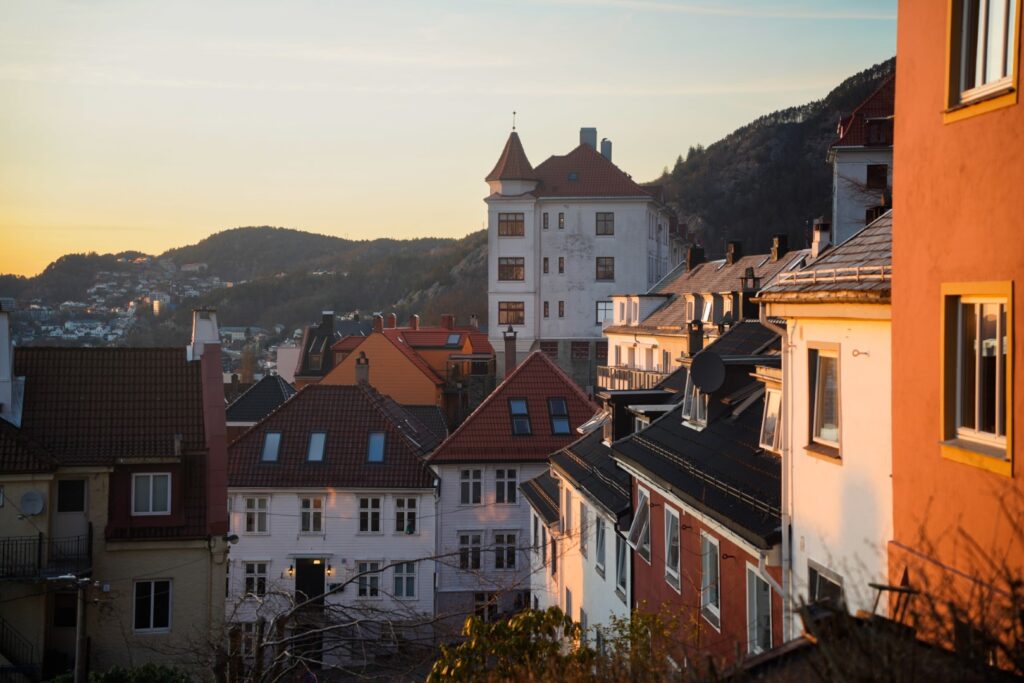
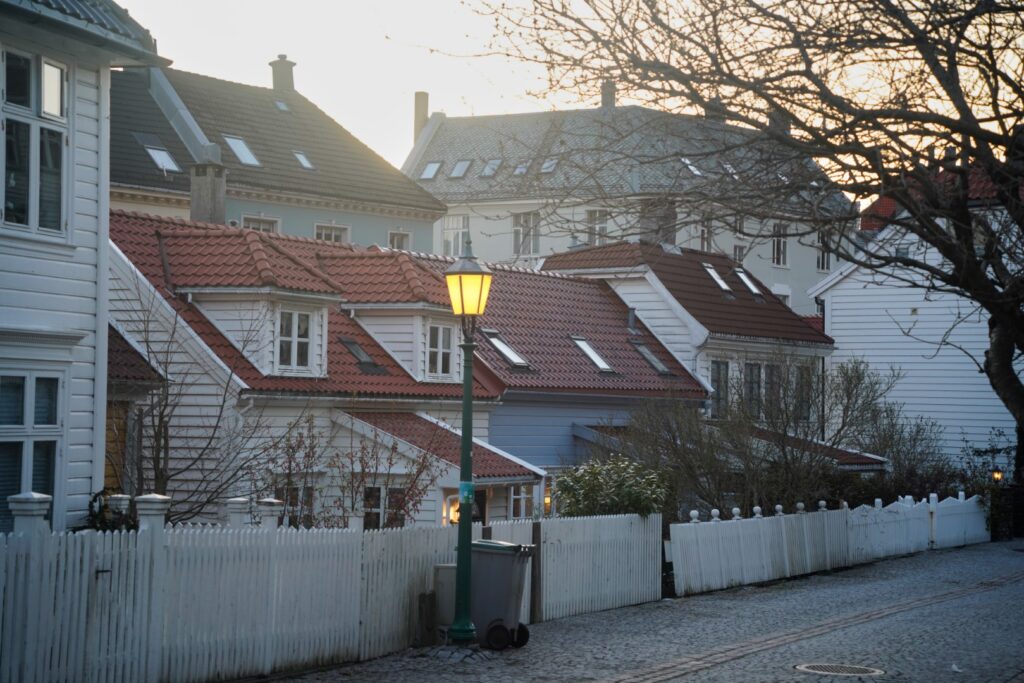
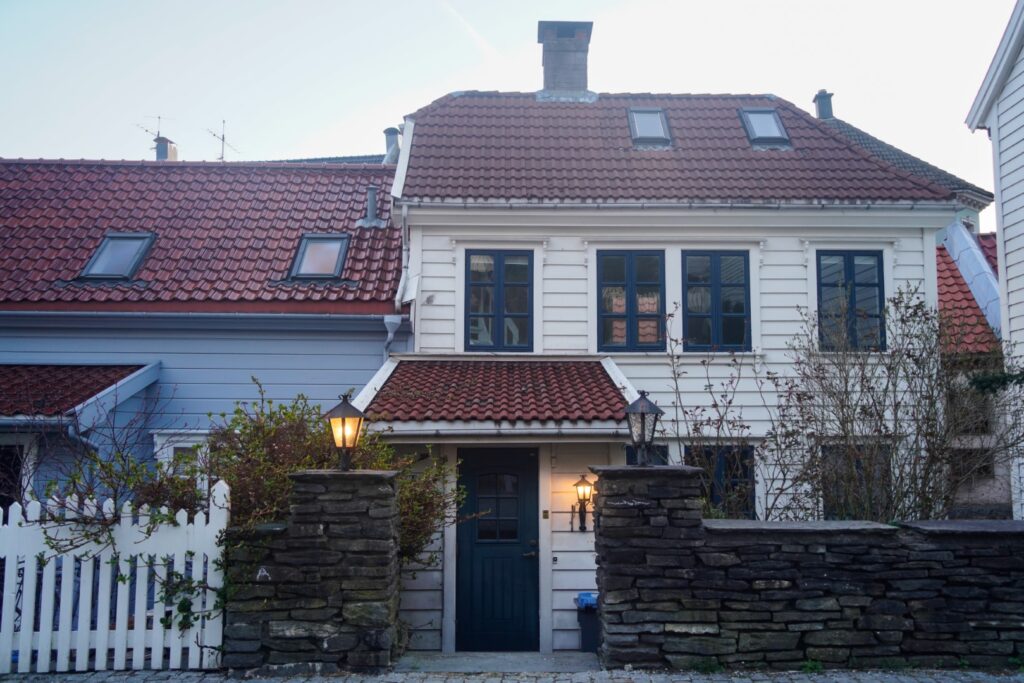

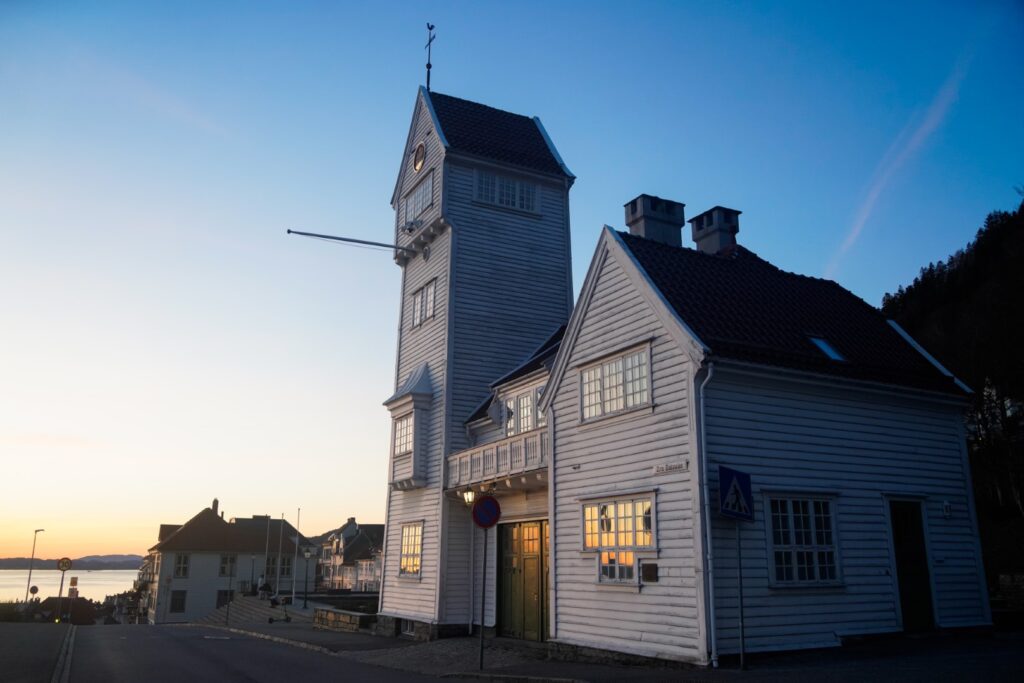
Indulge in history at Hordamuseet
Hordamuseet is a cozy open air museum, approximately 14 kilometres south of Bergen’s centre. It consists of buildings from the period 1850-1950, originating from the Hordaland area which surrounds Bergen, and tells stories from life in a rural village during this time period. There are also several prehistoric remains in the area, especially dating from the Iron Age.
Hordamuseet is a very small museum, but it’s worth spending at least half a day there to enjoy the atmosphere. If it’s a (rare) sunny day, it’s also a perfect place for a picnic in the sun. The houses and exhibitions are only open to groups and during special events (check here for more information), but the grounds are free to explore year-round. If you’re lucky, you might run into a local archaeologist who lives at the museum – we did! He let us look around in one of the historic houses and told us tales about everyday life back in the days.
Getting to Hordamuseet takes about an hour from the centre of Bergen. Catch the train towards the airport (Bergen Lufthavn), and get off at Lagunen (takes 30 minutes). Then catch bus 60, 61 or 64 towards Krokeide and get off at Stend (takes six minutes) and walk the last 800 m. to the museum. The address is Hordnesvegen 24, 5244 Fana.
There’s also another open air museum in Bergen – Gamle Bergen Museum – which showcases local houses from the 18th-20th century and portrays everyday life in the city during these times. I didn’t go there but it’s on my list for my next visit to Bergen!
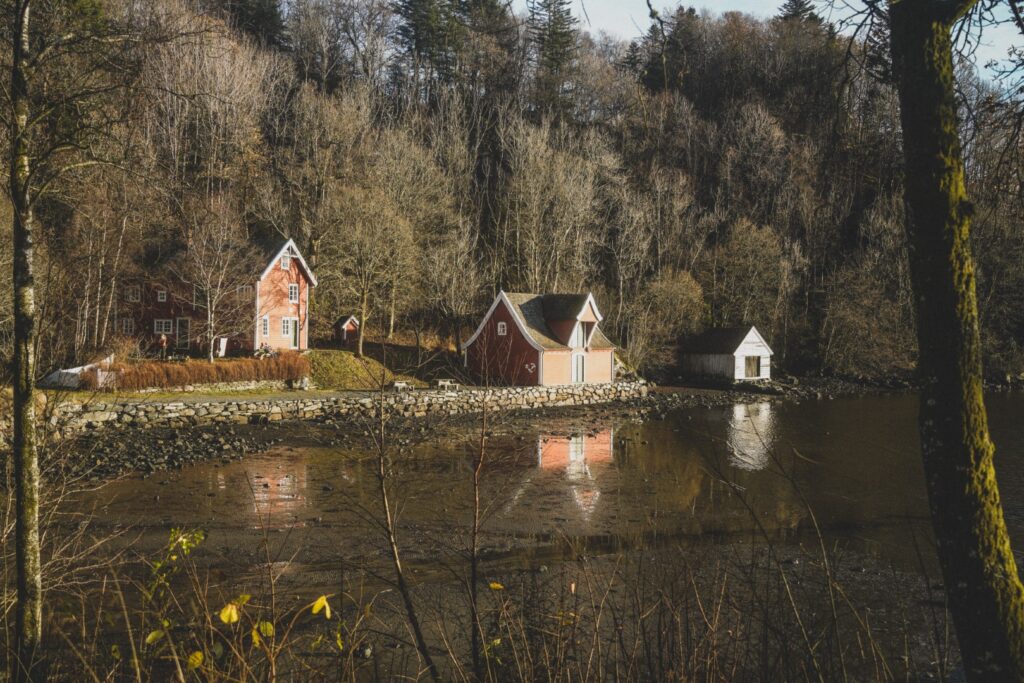


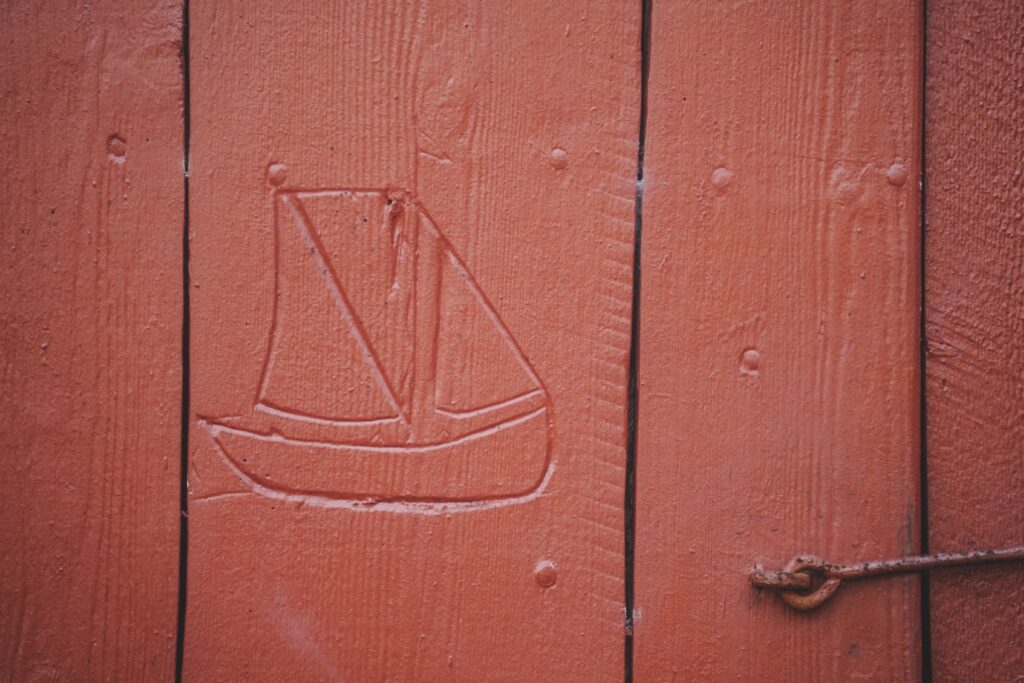
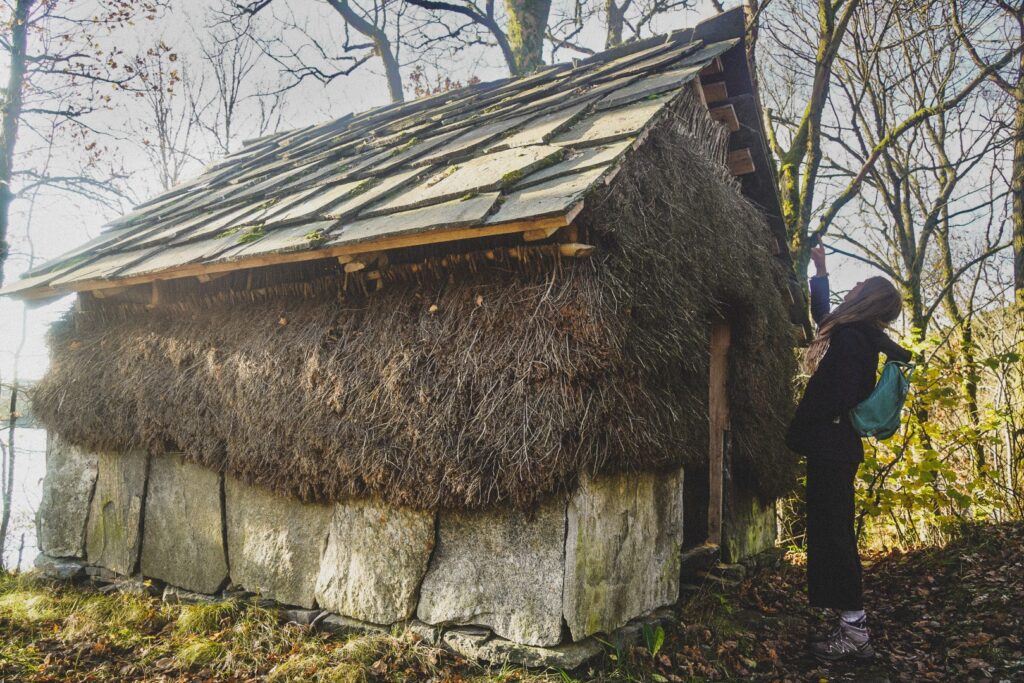
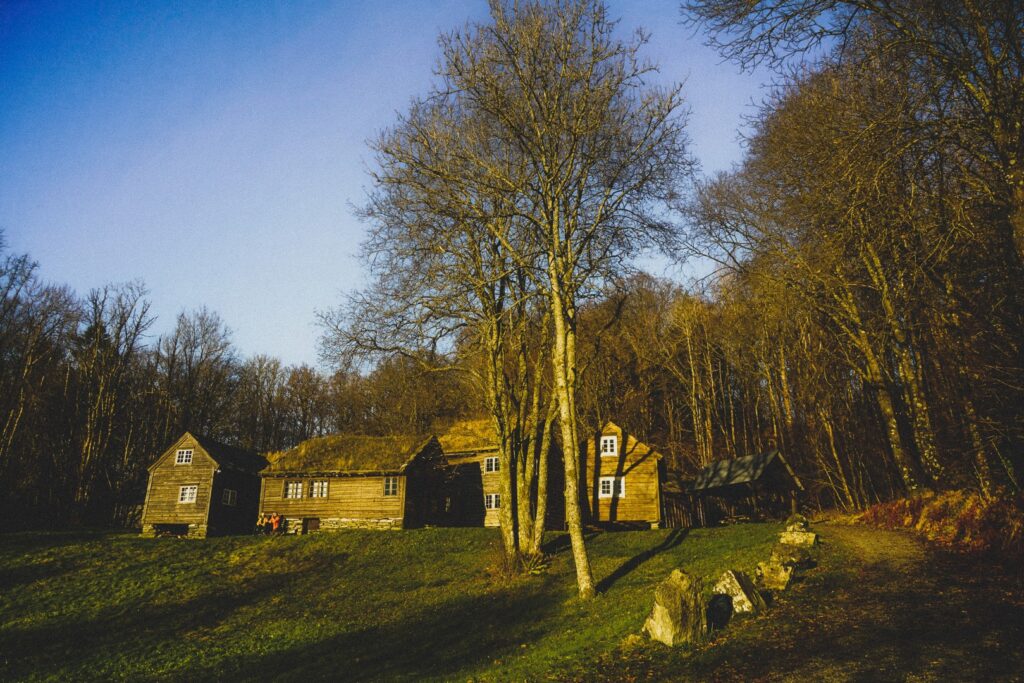
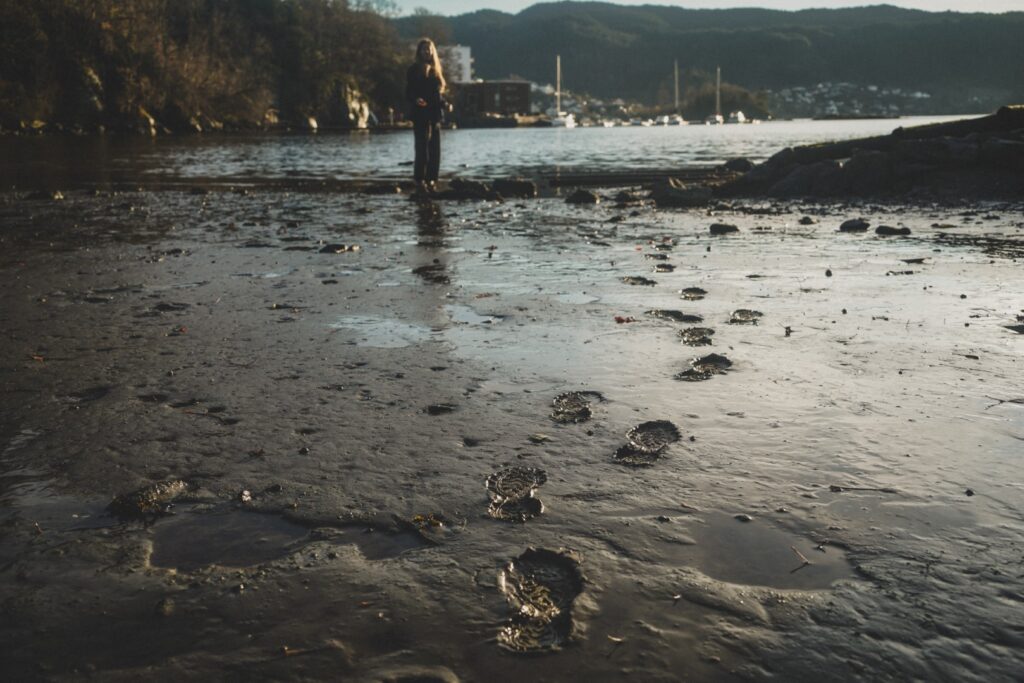
Go for a hike in the mountains
It’s a crime to visit Bergen without going hiking – or at least it should be!
Bergen is beautifully situated below seven low mountains which all offer more or less challenging hiking trails. All seven peaks are easy to climb; they don’t require any gear except for a camera! Mount Fløyen and Mount Ulriken are the most accessible of the seven mountains, and also the most popular. If you’re visiting Bergen in the summer, I recommend climbing one (or more!) of the other peaks to avoid the crowds. Gorgeous views are found everywhere so you can’t go wrong!
My best friend showed me her favourite hike in Bergen; along Tarlebøveien, past abandoned settlements, up Rundemanen (568 m. high) and ending in a beautiful downhill trail with wonderful views of the city below. The hike is just twelve kilometres but offers a vast array of different landscapes, viewpoints and cultural heritage. I can truly recommend this hike on a sunny day! You can find the route description here!

So there you have it – my suggestions of what to do in Bergen, even if all you get are rainy days. Grab an umbrella and go explore! The city is gorgeous in any weather!
WANT MORE INFO?: Download a city guide for Bergen with GPSmyCity here!
Updated 19/05/2023
Leave a Comment
Pingback: My May-June 2022: Around Denmark, Germany and a slice of the Czech Republic – Northtrotter on 18/06/2022
Pingback: Along Tarlebøveien & Rundemansveien: Abandoned farms and mountain views above Bergen – Northtrotter on 18/06/2022
Pingback: My April 2023: Orkney, Bergen and Denmark – Northtrotter on 18/06/2022
Pingback: Stavanger and Jæren: Exploring the largest lowland area in Norway – Northtrotter on 18/06/2022
Pingback: My favourite new destinations of 2021 – Northtrotter on 18/06/2022


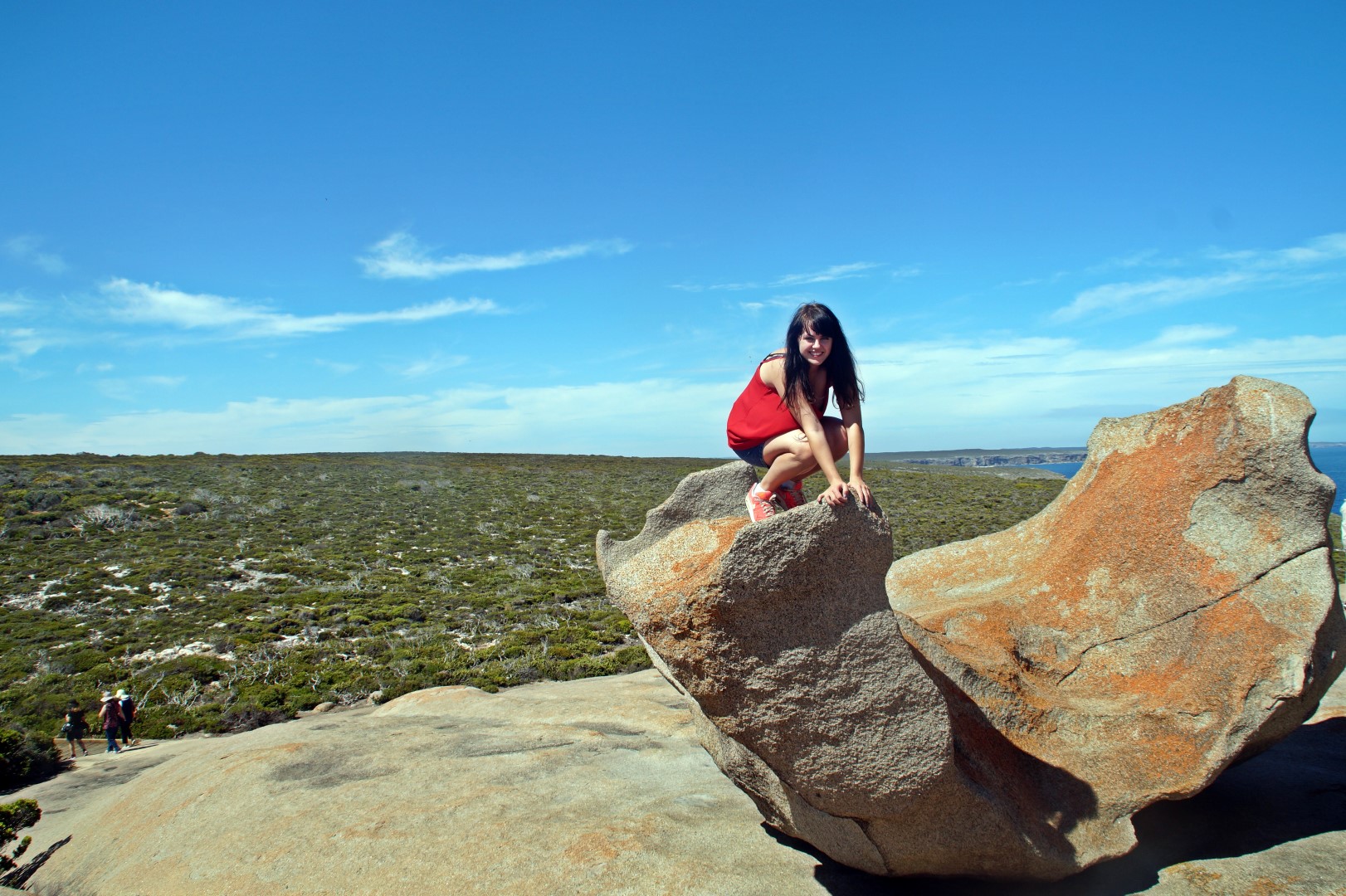
5 COMMENTS